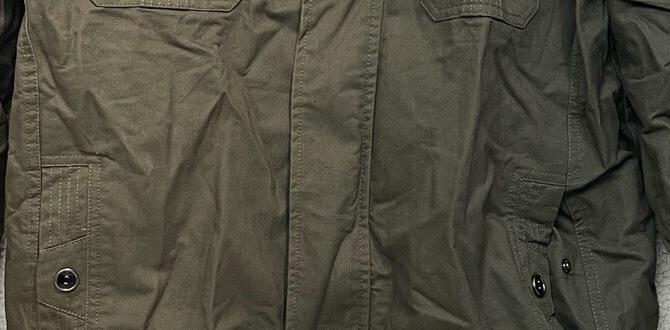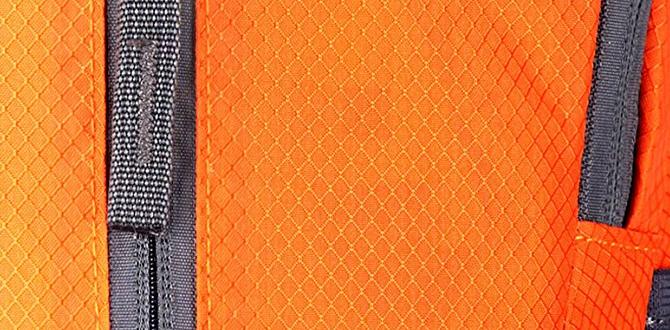Small indoor swimming pool designs offer luxurious and refreshing home additions, fitting even compact spaces with innovative solutions that enhance your lifestyle and property value. Explore clever layouts, space-saving techniques, and modern features to create your personal aquatic retreat.
Dreaming of a cool dip without leaving your home? A swim can be a wonderful way to relax and get some exercise, but you might think you need a huge backyard for a swimming pool. What if I told you that you can create a refreshing aquatic escape even in a smaller home, or by utilizing indoor space? It’s true! Many homeowners worry about the space and cost, but with a few smart design tricks, a small indoor swimming pool is totally achievable. We’ll explore some brilliant ideas that make this dream a reality, proving that even a compact pool can bring immense joy and a touch of luxury to your life. Get ready to discover how to bring the sparkle of a pool right into your home!
Why Consider a Small Indoor Swimming Pool?
Adding a small indoor swimming pool to your home might seem like a grand gesture, but the benefits can be surprisingly practical and rewarding. It’s not just about luxury; it’s about enhancing your well-being and lifestyle in tangible ways. Imagine being able to swim laps for exercise any time of year, regardless of the weather outside. This accessibility is a huge draw for fitness enthusiasts and those seeking a low-impact way to stay active. Beyond fitness, a pool offers unparalleled relaxation. It’s a private sanctuary where you can de-stress after a long day, cool off during warm spells, or simply enjoy a peaceful moment surrounded by water.
From a property value perspective, a well-designed indoor pool can be a significant enhancement. It’s a unique feature that can make your home stand out in the market. Furthermore, an indoor pool provides privacy that an outdoor pool simply can’t match, allowing for year-round enjoyment without worrying about onlookers or weather conditions. For families, it’s a fantastic way to entertain and create lasting memories. Kids and adults alike will cherish the convenience and fun a home pool provides. Let’s dive into the exciting possibilities!
Key Considerations for Small Indoor Pool Designs
Before you start picturing yourself doing laps, there are several important factors to consider when planning a small indoor swimming pool. These considerations will help ensure your pool is not only beautiful but also functional, safe, and cost-effective to maintain. Think of these as the essential ingredients for a successful indoor aquatic oasis.
Space and Location
The most crucial aspect is choosing the right space. Will it be in a dedicated room, part of a larger open-plan area, or perhaps a converted sunroom or basement? Measure your potential space carefully. Even a small pool needs enough room for the pool itself, plus some surrounding deck space for entry, exit, and lounging. Consider ceiling height, as this impacts the feeling of spaciousness and can be important for certain pool types like plunge pools or those with diving features (though diving is generally not recommended for small indoor pools). Basements can be excellent, offering insulation and privacy, but require good ventilation. Ground floor additions or sunrooms offer natural light but might require more structural work.
Budget
Indoor pools are a significant investment. Costs include construction, the pool itself (materials, filtration system, heating), ventilation, dehumidification, lighting, and ongoing maintenance (chemicals, electricity, water). Be realistic about your budget and get detailed quotes from pool builders specializing in indoor installations. Remember to factor in potential structural modifications to your home, such as reinforcing floors or creating new wall structures.
Ventilation and Dehumidification
This is perhaps the most critical, yet often overlooked, aspect of indoor pools. The constant evaporation from the water creates high humidity. Without proper ventilation and a robust dehumidification system, this moisture can damage your home’s structure, cause mold and mildew growth, and create an uncomfortable environment. A good ventilation system removes moist air and brings in fresh air, while a dehumidifier actively extracts moisture from the air. Look for systems specifically designed for indoor pool environments. According to the U.S. Environmental Protection Agency (EPA), managing indoor air quality is crucial for health and comfort, and this applies doubly to spaces with large bodies of water like indoor pools.
Heating and Water Quality
Maintaining a comfortable water temperature year-round is essential for an indoor pool. This requires an energy-efficient heating system, such as a heat pump or gas heater. The choice depends on your climate and energy costs. Water quality is also paramount. You’ll need a reliable filtration system and a method for sanitizing the water (e.g., chlorine, bromine, or salt systems). Regular testing and balancing of water chemistry are vital for health and to prevent damage to the pool and its equipment.
Safety Features
Safety is non-negotiable, especially when children or pets are around. Options include pool fencing (even indoors, this can be aesthetically integrated), non-slip surfaces around the pool, depth markers, and securely locking doors to the pool area. Consider the overall depth of the pool, keeping it manageable for its intended use. For a small indoor pool, often a shallower depth is most practical.
Genius Small Indoor Swimming Pool Designs
Now for the fun part – exploring the innovative designs that make small indoor pools a reality! These ideas focus on maximizing space, integrating seamlessly with your home, and providing a functional yet beautiful aquatic experience.
1. The Plunge Pool Paradise
For ultimate space-saving, a plunge pool is a fantastic choice. These are typically small, deep pools designed for cooling off, relaxation, or hydrotherapy rather than serious swimming. They can fit into surprisingly small footprints, like a corner of a basement, a converted small room, or even a spacious master bathroom.
- Design Elements: Often square or rectangular, with a depth of 4-6 feet. Can be designed with built-in benches for comfortable seating.
- Ideal Location: Basements, smaller dedicated rooms, or even expanded bathroom areas.
- Pros: Extremely space-efficient, lower water volume means less heating and chemical costs, quicker to clean.
- Cons: Not suitable for lap swimming, limited space for multiple users.
2. The Swim Spa Sanctuary
A swim spa, also known as an endless pool, is a brilliant solution for those who want to swim but have limited space. These units create a continuous, adjustable current that you can swim against, effectively turning a compact pool into an infinite swimming experience.
- Design Elements: Often long and narrow, designed to maximize swimming space within a smaller footprint. Many also include hydrotherapy jets for added relaxation. Can be integrated partially or fully into the floor.
- Ideal Location: Can be built into a basement, a ground-level extension, or even outdoored with a protective cover and climate control.
- Pros: Allows for actual swimming and fitness, space-saving compared to a traditional pool, often includes heating and jet features.
- Cons: Can be more expensive upfront than a plunge pool, the constant current might not appeal to everyone, requires dedicated power.
The Endless Pools brand is a well-known innovator in this category, offering various models and installation options. You can find more information about their designs on their official website, EndlessPools.com.
3. The Compact Lap Pool (Vertical Style)
If lap swimming is a priority, a more vertical (deep and narrow) lap pool design can work exceptionally well indoors. These aren’t wide, but they are long enough to allow for a few strokes before you turn. This design minimizes the overall width needed, making it feasible for long, narrower spaces often found in basements or converted garages.
- Design Elements: Typically rectangular, focused on length, with a depth suitable for swimming.
- Ideal Location: Long, narrow rooms, basements, or garages.
- Pros: Allows for proper swimming strokes, efficient use of linear space.
- Cons: Requires a significant length, can feel less spacious than a wider pool.
4. Integrated Wet Room/Pool Area
For a truly seamless look, consider integrating your small pool into a larger “wet room” concept. This could be an extension of a bathroom, a dedicated spa room, or a covered patio area. The pool itself can be smaller, perhaps a plunge pool or a bench-seated design, surrounded by water-resistant finishes, a sauna, or a steam shower.
- Design Elements: Focus on high-quality, waterproof finishes on floors and walls, good drainage, and aesthetic integration with other spa-like features.
- Ideal Location: Expansions of bathrooms, dedicated spa rooms, or enclosed sunrooms.
- Pros: Creates a cohesive, luxurious spa-like experience, maximizes function in a limited footprint.
- Cons: Requires careful waterproofing and drainage planning, can be expensive.
5. The Convertible Pool Concept
A more advanced and often custom-built solution involves a pool that can be partially or fully covered, effectively turning the space into usable room when the pool isn’t in use. This can be achieved with retractable covers or even sub-flooring systems. While these are typically for larger pools, smaller versions are emerging.
- Design Elements: Requires sophisticated engineering for safety and water protection when covered. Automated covers are common.
- Ideal Location: Versatile, but usually requires significant customisation.
- Pros: Maximizes the utility of the space, can be safer when not in use.
- Cons: Very high cost, complex engineering, maintenance of the cover system.
Essential Systems for Indoor Pools Explained
Building an indoor pool isn’t just about digging a hole and filling it with water. The magic lies in the supporting systems that keep it running smoothly, safely, and comfortably. For an indoor environment, some of these systems are even more critical than for their outdoor counterparts.
1. Ventilation and Dehumidification Systems
As mentioned, this is crucial. An effective system removes humid air from the pool enclosure and replaces it with fresh, dry air. This prevents condensation, protects your home’s structure, and maintains air quality. Heat recovery ventilators (HRVs) and energy recovery ventilators (ERVs) are often used in conjunction with dedicated dehumidifiers to not only manage moisture but also manage energy efficiency by pre-heating incoming air with outgoing air. The ENERGY STAR program offers guidance on selecting efficient dehumidifiers for your home’s needs, which can be adapted for a pool environment for better energy savings.
2. Heating Systems
Indoor pools benefit from consistent temperatures. Common heating methods include:
- Electric Heat Pumps: Efficient but can be slower to heat, ideal for moderate climates.
- Gas Heaters: Heat water quickly, making them good for rapid heating needs or colder climates, but can be more expensive to run.
- Solar Heaters: Can supplement other heating systems, reducing running costs, though less predictable indoors without direct sunlight.
The size of your pool and your local climate will dictate the best heating solution. Proper insulation of the pool and the room itself will significantly reduce heating costs.
3. Filtration and Sanitization
Clean water is healthy water. Every pool needs a robust filtration system to remove debris and particles. Sanitization prevents the growth of bacteria and algae. Common methods include:
- Chlorine: A traditional and effective sanitizer, requires careful balancing.
- Bromine: Similar to chlorine but often preferred in warmer water and for those sensitive to chlorine.
- Saltwater Systems: Use a salt chlorine generator to produce chlorine from salt, leading to softer water and less odor.
- Ozone or UV Systems: Can be used as secondary sanitizers alongside chlorine or bromine to reduce chemical usage.
Regular water testing kits are essential for maintaining proper chemical levels and ensuring the water is safe and enjoyable.
| System Type | Focus | Key Benefits | Considerations |
|---|---|---|---|
| Ventilation & Dehumidification | Air Quality & Moisture Control | Prevents mold, protects home structure, comfortable air. | Requires professional installation, ongoing energy cost. |
| Heating | Water Temperature | Year-round use, comfortable swimming experience. | Energy efficiency, upfront cost varies by type. |
| Filtration | Water Clarity & Purity | Removes debris, keeps water clean. | Requires regular maintenance, variable cost. |
| Sanitization | Water Safety | Kills bacteria & algae, prevents health issues. | Chemical cost, potential skin/eye irritation with some types. |
Design and Material Choices for Small Indoor Pools
The aesthetic of your indoor pool space is as important as its functionality. Choosing the right materials can enhance the atmosphere, durability, and ease of maintenance.
Pool Shell Materials
The material of the pool itself impacts durability, cost, and appearance:
- Fiberglass: Smooth, non-porous surface, quick to install, and low maintenance.
- Vinyl Liner: Cost-effective for simple shapes, but liners may need replacement over time.
- Concrete (Gunite/Shotcrete): Highly customizable shapes and sizes, durable, but requires a longer construction time and more specialized finishing.
- Tile: Can be used as a finish for concrete pools or as accents for other materials, offering a high-end look but can be costly and require grout maintenance.
For small indoor pools, fiberglass and custom concrete with tile finishes are popular for their durability and aesthetic potential. The National Swimming Pool Foundation (now part of the Pool & Hot Tub Alliance) offers guidelines on pool construction standards and materials.
Surrounding Decking and Finishes
The area around your pool needs to be safe, water-resistant, and attractive. Consider:
- Non-slip Tiles: Offer excellent traction and are easy to clean. Porcelain or ceramic tiles with textured finishes are good options.
- Natural Stone: Like travertine or slate, these provide a luxurious look but require sealing and can be porous.
- Waterproof Wood Alternatives: Composite decking materials designed for wet environments can be used.
- Epoxy or Resin Coatings: Can be applied to concrete floors for a seamless, durable, and attractive finish.
Ensure all materials are designed to withstand high humidity and potential splashes.
Lighting and Ambiance
Lighting plays a huge role in the mood of your indoor pool area. Consider a combination of:
- Underwater LED Lights: Energy-efficient and long-lasting, they create a beautiful glow.
- Ambient Room Lighting: Dimmable fixtures that can adjust the mood from bright and energetic to soft and relaxing.
- Natural Light: If your space allows for skylights or ample windows, it can make the area feel more open and airy.
Smart lighting systems can allow you to control brightness and color, enhancing the experience.
Step-by-Step: Bringing Your Small Indoor Pool to Life
Here’s a general roadmap for making your small indoor pool dream a reality:
- Dream and Research: Explore different designs (plunge pool, swim spa, etc.), look at inspiration photos, and understand the core requirements like ventilation and heating.
- Assess Your Space: Measure potential locations, check for structural limitations, and consider ceiling height and access for construction.
- Set Your Budget: Be realistic about all costs – construction, systems, finishes, and ongoing maintenance.
- Consult Professionals: This is key! Hire an experienced pool builder and potentially an architect or structural engineer. Get multiple detailed quotes.
- Design and Planning: Work with your builder to finalize the pool’s size, shape, depth, and select all equipment (filtration, heating, ventilation, dehumidification). Plan the surrounding area, including decking and lighting.
- Permits and Approvals: Your builder will typically handle obtaining the necessary building permits from your local municipality.
- Construction: This phase involves excavation (if needed), structural work, plumbing, electrical, and plastering/finishing of the pool shell.
- System Installation: Install ventilation, dehumidification, heating, filtration, and sanitation equipment.
- Decking and Finishing: Install surrounding tiles, finishes, and any decorative elements.
- Filling and Water Treatment: Once construction is complete, the pool is filled, and water chemistry is carefully balanced.
- Final Inspection: Your local building department will conduct a final inspection.
- Enjoy! Once cleared, your indoor oasis is ready for you to enjoy.
FAQ: Your Indoor Pool Questions Answered
Q1: How much space do I really need for a small indoor pool?
A1






